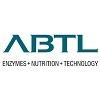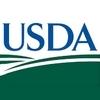Explore all the information on
Amino acids in poultry nutrition
Adequate provision of dietary amino acids is required to maintain normal immunocompetence and protection of the host from some diseases in all species (Beski et al. 2015). Therefore, the development of immune function in poultry will be promoted if they receive sufficient amino acids in their diets. The essential amino acids for poultry are arginine, glycine, histidine, leucine, isoleucine, lysine, methionine, cystine, phenylalanine, threonine, tryptophan, and valine. Out of these, the ones critical in practical diets are arginine, lysine, methionine, cystine and tryptophan.
Introduction Today, the broiler industry plays an important role in supplying the protein requirements of the people of the world. Shortening of broiler rearing cycle enhances the importance of growth during the first week of life (Nistan et al., 1991). Although genetic selection for growth has affected the digestive tract of poultry, the digestive processes are not fully developed on the day of hatch (Croom et al., 1999). Therefore, the insufficient nutrient digestion and...
Comments : 0
Recommendations: 0
INTRODUCTION Physical treatments, such as expansion and pelleting, are used in the processing of diets with the aim of enhancing feed efficiency. This occurs because during these processes, in addition to starch granule gelatinization, there are also partial protein denaturation, which leads to increased food digestibility and consequently improved broiler performance (Oliveira et al., 2011). Besides technological benefits, feed processing methods are associated with the...
Comments : 0
Recommendations: 0
.jpg&w=3840&q=75)

Influence of low protein diets on performance and intestinal health
Suggested link
If Immunity is your top priority, Immunotech Forte™ is a synergistic combination of systemic enzymes such as Serratiopeptidase, Papain, Bromelain, Bioflavonoids,vitamins and amino acids. It is a fortified immunity enhancer to boost bird’s immune system, reduce stress and gain resistance to disease incidences....
Comments : 6
Recommendations: 3
Introduction Soybean meal (SBM) is the most important and preferred source of quality protein in animal feeds (Banaszkiewicz, 2011). Among the oil seeds, SBM contains the highest crude protein (CP) and has the best AA profile, with only 6% crude fibre (Dei, 2011). The AAs in SBM are highly digestible by poultry (Newkirk, 2010). Based on the CP content, SBM can generally be classified as high protein (47% - 50%), or low protein (44% - 46%). Popescu & Criste (2003) suggested...
Comments : 0
Recommendations: 0
The video shows the story of Rhodimet® AT88 in key events: industrial projects, research initiatives, or development of services and expertise. Rhodimet® AT88 is a DL-hydroxy-methionine, containing 88% OH-Methionine with various benefits....
Comments : 1
Recommendations: 2
The biggest challenges facing the poultry industry today include disease prevention, particularly in the absence of antibiotics, and optimum nutrition, especially with regards to being able to incorporate novel/local ingredients into the diet. Interestingly these two are linked as much of the disease pressure that challenges current poultry production is enteric in its nature. Since the presence or absence of specific nutrients/antinutrients in the diet will influence the structure of the...
Comments : 35
Recommendations: 20
INTRODUCTION It has been well known that branched-chain amino acids (BCAA) (Val, Leu and Ile) are not only substrates for building block protein but they are also involved in intracellular signaling pathways on protein anabolism and stimulatory effects on protein synthesis. Among the 3 BCAA, Leu has been considered most effective in stimulating muscle protein synthesis by modulating the activation of mechanistic target of rapamycin (mTOR) and its downstream effectors, ribosomal...
Comments : 1
Recommendations: 1
Published literature indicates that L-arginine (L-Arg), guanidinoacetic acid (GAA) and L-citrulline (L-Cit) can all provide arginine activity in broiler diets (Su and Austic, 1999; Dilger et al., 2013; DeGroot, 2018) and all are commercially available. GAA has been reported to have 77% arginine equivalence for feed conversion (Ringel et al., 2013). This study was conducted to determine the effect of arginine deficiency on performance in reduced protein diets and the efficacy of adding it...
Comments : 0
Recommendations: 0
by Sam Shafer
Poultry scientists find potential link between valine×leucine interactions and woody breast
According to a new study in The Journal of Applied Poultry Research , producers have little to worry about when it comes to branched-chain amino acid interactions and their effects on broiler live performance...
Comments : 0
Recommendations: 0
Overview Renewed interest, especially in the United States, has sparked in assessing branched-chain amino acid interactions in practical diets for broilers. Indeed, as L-valine enters formulation bird nitrogen excesses are reduced as diet protein falls to the new first limiting amino acid (e.g., isoleucine, arginine, or tryptophan). For a United States based example, the result is less oilseeds and more gains, which typically result in increased inclusions in corn or corn...
Comments : 0
Recommendations: 2
1. Introduction Coccidiosis is a worldwide disease caused by the Apicomplexa protozoa of Genus Eimeria [1]. This parasitic disease causes economic losses in poultry industry due to malabsorption, reduced weight gain (explained by a reduced feed intake and as well as nutrient absorption), increased mortality and the use of anticoccidial drugs and vaccines [2, 3] and remains as a major issue for poultry producers in a large number of countries including USA [4], costing for the...
Comments : 0
Recommendations: 1
1. Introduction Methionine (MET), a sulfur containing amino acid, is considered an essential amino acid in poultry because poultry cannot naturally synthesize sufficient amounts to sustain normal body functions [1]. MET is required for buildup of the immune system and improvement of live performance, i.e., feed efficiency, muscle development and better yield [2]. Supplemental MET in broiler diets have been shown to improve body weight (BW), feed intake (FI), feed conversion...
Comments : 0
Recommendations: 0
Introduction Protein is a major component of animal tissues and products. Thus, adequate intake of dietary protein is essential to optimise growth, production performance, and feed efficiency in poultry. Soybean meal is most commonly used protein source and used around 20-30 % in poultry feed. Now days protein feed ingredients like soybean meal are consistently increasing in cost; so protein has become one of the most expensive nutrients in poultry diet. After feed consumed by...
Comments : 1
Recommendations: 1
Martina Kluenemann, Research Manager for Nutrition Immunology and Physiology at Evonik Animal Nutrition, speaks about the mode of action of creatine as a constituent of energy metabolism and the benefits of GuanAMINO® supplementation in animals...
Comments : 0
Recommendations: 5


Lost in the Market Uncertainty Caused by the Outbreak
Suggested link
Introduction Poultry, due to its genetic, nutritional and managemental upgradation have become a source for quick productivity. But, skyrocketing conventional ingredients, fluctuating managemental conditions, and other quality parameters of rearing birds, farmer...
Comments : 1
Recommendations: 0
Evonik’s animal feed solutions quench livestock thirst and reduce the environmental impact of meat and dairy production WHITEPAPER According to the UN, four billion people experience severe water scarcity for at least a month a year – and due to our unsustainable use of freshwater and other resources, water stress will increase further. One of the drivers is water-intensive meat and dairy production, which accounts for roughly a quarter of the global water...
Comments : 0
Recommendations: 1
Comparative life cycle assessment of amino acid use in pig, broiler and egg production. In 2015, Evonik reported a comparative life cycle assessment (LCA) of methionine, lysine, threonine, tryptophan and valine in broiler and pig...
Comments : 0
Recommendations: 4
Amino Acids Of M/S Priya Chemicals Obtained By Enzyme Hydrolysis
1. Consists of twenty amino acids.
2. All amino acids are in l form (natural form) & are absorbed quickly & easily by plants.
3. No cyclization of glutamine which is important for energy metabolism.
4. No destruction of aspargine which has active role in respiratory function.
5. Tryptophan which is starting material for...
Comments : 0
Recommendations: 1
.jpg&w=3840&q=75)

Influence of low protein diets on performance and intestinal health
Suggested link
Protein is the second most expensive nutrient in animal feed formulation, after energy. Diets which have excess crude protein can overload the gastrointestinal tract with excess amino acids and undigested protein (Apajalahti and Vienola, 2016), resulting in impaired feed efficiency, health and welfare issues as well as negative environmental impacts via excess nitrogen excretion. Reducing dietary protein in poultry diets can help to mitigate some of these negative effects. In poultry diets,...
Comments : 0
Recommendations: 0
INTRODUCTION A healthy gut can help birds to gain optimum growth performance because gastrointestinal tract (GI) is meant for digestion/absorption of nutrients and immune response. The mucosal membrane of the intestine serves as a barrier between luminal digesta and tissues and requires a dynamic balance between different components of gut like epithelial cells, microbiome, and immune system cells for proper functioning. One of the most important components that affect...
Comments : 0
Recommendations: 0










.jpg&w=3840&q=75)



















